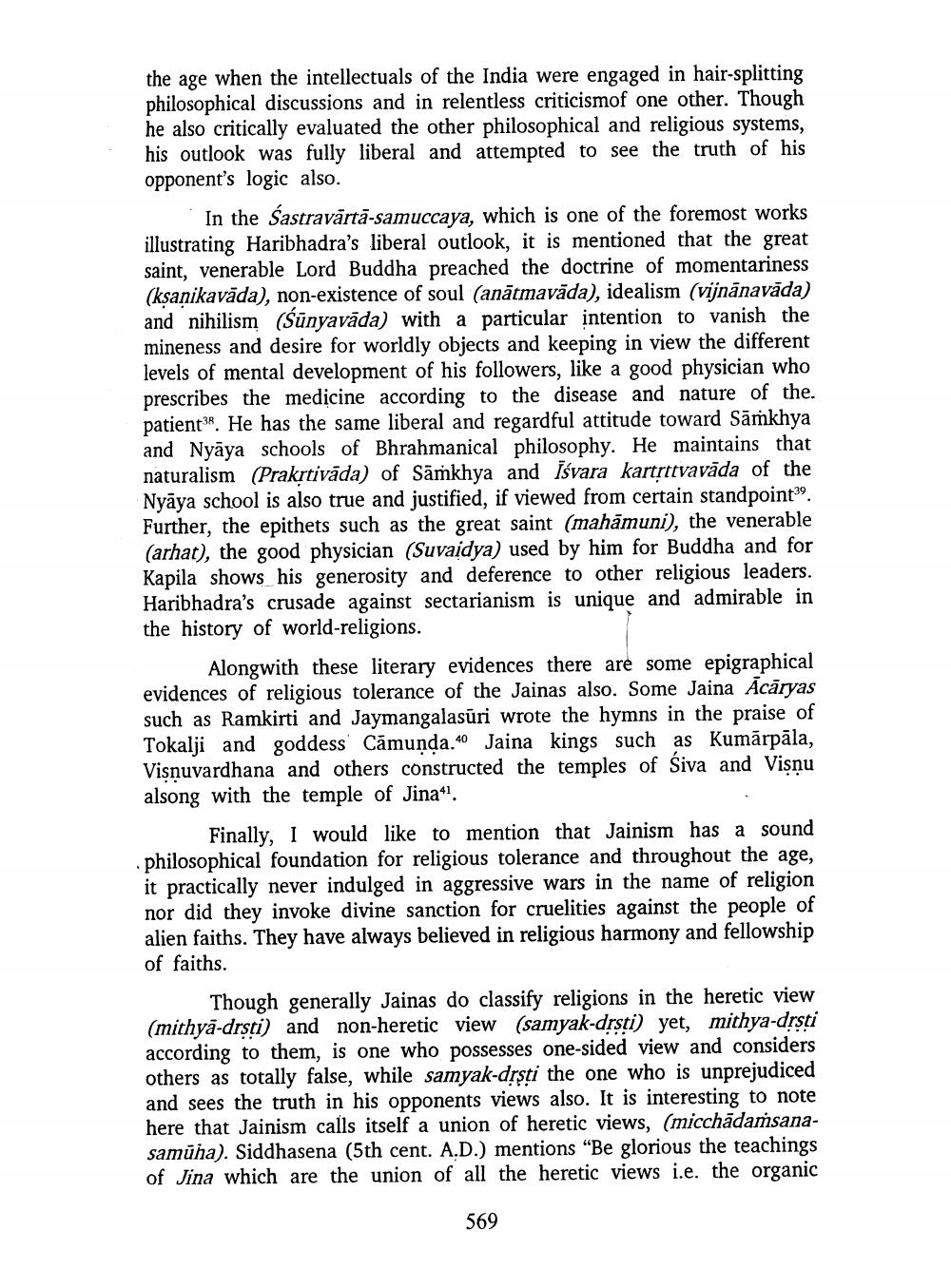________________
the age when the intellectuals of the India were engaged in hair-splitting philosophical discussions and in relentless criticismof one other. Though he also critically evaluated the other philosophical and religious systems, his outlook was fully liberal and attempted to see the truth of his opponent's logic also.
In the Sastravārtā-samuccaya, which is one of the foremost works illustrating Haribhadra's liberal outlook, it is mentioned that the great saint, venerable Lord Buddha preached the doctrine of momentariness (kșanikavāda), non-existence of soul (anātmavāda), idealism (vijnanavāda) and nihilism (Šūnyavāda) with a particular intention to vanish the mineness and desire for worldly objects and keeping in view the different levels of mental development of his followers, like a good physician who prescribes the medicine according to the disease and nature of the. patient38. He has the same liberal and regardful attitude toward Sāmkhya and Nyāya schools of Bhrahmanical philosophy. He maintains that naturalism (Prakrtivāda) of Samkhya and Isvara kartrttvavāda of the Nyāya school is also true and justified, if viewed from certain standpoint". Further, the epithets such as the great saint (mahāmuni), the venerable (arhat), the good physician (Suvaidya) used by him for Buddha and for Kapila shows his generosity and deference to other religious leaders. Haribhadra's crusade against sectarianism is unique and admirable in the history of world-religions.
Alongwith these literary evidences there are some epigraphical evidences of religious tolerance of the Jainas also. Some Jaina Ācāryas such as Ramkirti and Jaymangalasūri wrote the hymns in the praise of Tokalji and goddess Cámunda.40 Jaina kings such as Kumārpāla, Visnuvardhana and others constructed the temples of Śiva and Visnu alsong with the temple of Jina“.
Finally, I would like to mention that Jainism has a sound philosophical foundation for religious tolerance and throughout the age, it practically never indulged in aggressive wars in the name of religion nor did they invoke divine sanction for cruelities against the people of alien faiths. They have always believed in religious harmony and fellowship of faiths.
Though generally Jainas do classify religions in the heretic view (mithya-drsti) and non-heretic view (samyak-drsti) yet, mithya-drsti according to them, is one who possesses one-sided view and considers others as totally false, while samyak-drsti the one who is unprejudiced and sees the truth in his opponents views also. It is interesting to note here that Jainism calls itself a union of heretic views, (micchādassanasamüha). Siddhasena (5th cent. A.D.) mentions "Be glorious the teachings of Jina which are the union of all the heretic views i.e. the organic
569




